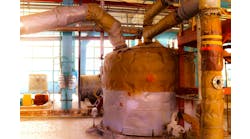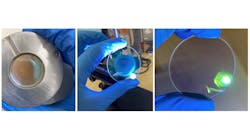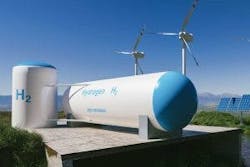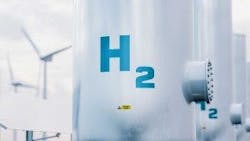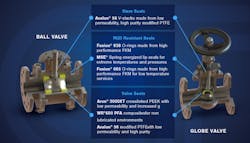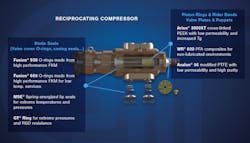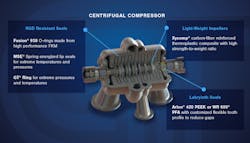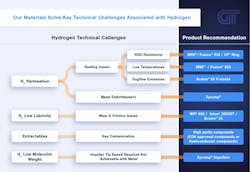Hydrogen and its potential as a clean fuel are hitting headlines, as countries representing over half of the global GDP announced a 12-month plan at the COP27 climate talks in the coastal Egyptian resort of Sharm el-Sheikh earlier this month.
The Fuel of the Future
All stars seem aligned for Hydrogen to help make clean technologies cheaper and more accessible everywhere. Here’s why: The 47-nation group, including Australia, China, the UAE, the European Commission, and all G7 nations, agreed to deploy at least 100 Hydrogen valleys—locally integrated hydrogen ecosystems that cluster several industrial and research initiatives to carry out pilot projects across the complete hydrogen value chain. Additionally, their target to deploy “50 large scale net zero emission industrial plants” is likely to create demand for hydrogen production.
While COP27 sent a clear signal of policy direction to investors and companies, this push for Hydrogen is not new to the energy sector which has already been scaling up investments in cleaner and more sustainable technologies to achieve net zero.
Philippe Allienne, industry expansion manager at Greene Tweed says,
“More and more big oil companies are pursuing multimillion-dollar hydrogen projects to reduce carbon emissions and create a long-term carbon-free future. In power generation, hydrogen is one of the leading options for storing energy from renewables in large quantities over a long period. Under pressure to decarbonize, the transportation industry is pursuing Hydrogen-powered vehicles, such as buses, trucks, and even airplanes. Energy-intensive industries, such as cement and steel manufacturing, are reconfiguring their processes to replace fossil-fuel-based energy sources with hydrogen fuel.”
Stumbling Blocks
Proponents of Hydrogen have identified several potential planet-saving applications and lined up exciting mega-projects. Even as plans to produce and use hydrogen move ahead, several challenges to position it as the reliable, next-generation, clean fuel remain.
Firstly, limited quantities of hydrogen molecules occur naturally and the cheapest way to manufacture hydrogen uses petroleum or natural gas and requires a lot of energy while emitting a vast amount of carbon dioxide, detracting from the sustainability benefits.
Several methods for producing hydrogen that reduce or eliminate these disadvantages are emerging. Blue hydrogen, for example, is derived from natural gas, but a carbon capture and storage (CCS) technology is applied to capture the carbon dioxide emissions and store them underground. The long-term goal is to make green hydrogen from water via electrolysis using renewable electricity, ideally coming from wind or solar sources.
However, fuel cell technology required to produce green hydrogen is costly, and today there is very limited infrastructure to produce or transport green or blue hydrogen required to create a sustainable hydrogen economy.
Additionally, hydrogen is extremely flammable and explosive, making it difficult to store and transport. Due to a low energy density, its storage and transport require large volumes, high pressures or cryogenic processes to be stored compactly in liquid form. Moreover, it can cause metals to become brittle, and very few pipelines are currently suitable to transport pure hydrogen. Hydrogen is one of the smallest molecules and can permeate almost every material, making it very difficult to seal.
Debates continue, but recent announcements at COP27 and elsewhere make one thing clear: Hydrogen will play a major role in a clean, secure, and affordable energy future in the next few decades.
How Greene Tweed Can Help You Unlock Hydrogen’s Power
It is hardly surprising that hydrogen is catching everyone’s attention, from environmentalists and governments to boardrooms across the world. It's a very important piece of the Net Zero puzzle and investments in hydrogen production are set to exceed billions of dollars.
Yet, the majority of the equipment and processes needed to produce, store, and transport hydrogen are not ready to start working with it. Some of the biggest challenges presented by the tiniest, lightest molecule known to man include:
- High permeability of hydrogen can cause sealing issues and metal embrittlement
- Hydrogen’s low lubricity can lead to wear and friction issues
- Impurities in hydrogen can cause contamination of fuel cells
- High impeller tip speed required to compress hydrogen with centrifugal compressors is barely achievable with metal
Get Ready for Hydrogen
We at Greene Tweed have been manufacturing high-performance elastomers, thermoplastics, composites, and engineered components that can withstand harsh industrial conditions. We are ready with a wide range of material solutions that solve these hydrogen challenges. Here are the three major pieces of equipment in the Hydrogen supply chain that can benefit immensely from our material solutions:
1 . Valves
Valves are safety-critical components when producing or handling hazardous fluids. And hydrogen poses a few unique challenges. It's an extremely light and low-density gas. This means that it can penetrate any type of polymer or metal, causing leakage.
“Permeation is a huge problem with Hydrogen and that’s why it is critical to select products made of materials with minimal permeability to reduce leakage. For instance, cross-linking a material like PEEK could help to lower diffusion coefficient and enhance performance in hydrogen environment by reducing permeation,” says Kerry Drake, Technology Manager at Greene Tweed.
Arlon 3000XT crosslinked PEEK may therefore be an excellent solution for valve seats in Hydrogen service. Low lubricity of hydrogen molecules can generate valve seats wear and friction issues. For these non-lubricated environments, Greene Tweed offers WR 600, a PFA composite with unique dry-running properties, and Arlon 3000XT, the only cross-linked PEEK available in the market.
When combined with high pressure, hydrogen permeation can generate Rapid Gas Decompression (RGD) issues. Greene Tweed recommends RGD-resistant Fusion 938 O-rings or MSE spring-energized lip seals for extreme temperatures and pressures. Permeation issues can also occur at low temperatures, too, and Fusion 665 O-rings are best suited to overcome such problems.
2 . Compressors
Compressors are critical to storing and transporting hydrogen safely and cost-effectively.
“Compressors are one of the most critical [pieces of] equipment to transport the increasing amount of hydrogen that will be required to properly support the expected rise in hydrogen demand,” says Allienne. But designing new compressors or upgrading current compressors for hydrogen services often present[s] technical challenges not typically seen with other gases, he adds.
For any type of hydrogen compressors, Greene Tweed engineers recommend Fusion 938 O-rings for RGD resistance and Fusion 665 O-rings for low-temperature services. In reciprocating compressors, our Arlon 3000XT cross-linked PEEK, WR 600 composites, and Avalon 56 modified PTFE are a great choice in piston rings and rider bands as well as valve plates.
While designing a centrifugal compressor for hydrogen service, engineers need to ensure a high operating speed for the impeller. The maximum achievable impeller tip speed depends on the material used to construct it. Greene Tweed recommends Xycomp carbon-fiber reinforced thermoplastic composite with a high strength-to-weight ratio. For sealing elements, RGD-resistant Fusion 938 O-rings and MSE spring-energized lip seals for extreme temperatures and pressures are best suited.
3 . Electrolyzers
Green hydrogen, a potentially carbon-free fuel, is critical to decarbonizing the global economy. What makes green hydrogen possible are electrolyzers that split water into hydrogen and oxygen using electricity that comes from sources like wind and solar.
To produce emission-free hydrogen, electrolyzers need material solutions that can withstand challenges, such as material outgassing, chemical compatibility or degradation of mechanical properties at increased temperatures.
Greene Tweed has developed a portfolio that includes materials to enhance the performance of fuel cells and electrolyzers. These include Arlon 3000XT which provides chemical resistance better than standard PEEK while retaining the mechanical properties of standard PEEK at a higher temperature. Moreover, it offers permeability 200 times lower than standard PEEK.
Greene Tweed’s Chemraz seals are ideal for their exceptional chemical compatibility, low outgassing properties, and high-temperature capabilities.
Testing Matters
How do we know that our material solutions work with hydrogen? We are actively testing our materials extensively at several independent laboratories to ensure that our solutions can withstand the challenges associated with hydrogen. So far, results from tests including high-pressure cyclic exposure tests and permeation tests show our materials and solutions are ready to support and empower hydrogen infrastructure.
Pragati Verma is the content lead at Greene Tweed.
